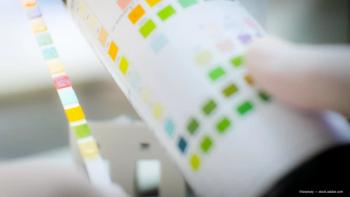
Meeting highlights from the 24th annual congress of the ESCRS
Clear corneal incisions and silicon IOLs are new risk factors in post-cataract surgery endophthalimitis, Peter Barry revealed in the first presentation of the full ESCRS endophthalmitis study results.
Clear corneal incisions and silicon IOLs are new risk factors in post-cataract surgery endophthalimitis, Peter Barry revealed in the first presentation of the full ESCRS endophthalmitis study results.
In January this year the data committee broke the study because it demonstrated a fivefold reduction in the risk of patients acquiring endophthalmitis infection when intracameral cefuroxime is applied at the end of cataract surgery. However, the link with silicon IOLs and corneal incisions was not revealed at that time.
"We now have established the real, true incidence of endophthalmitis as far as it can be established," said Dr Barry. This was the largest antibiotic study in medical history.
The study established that the incidence of endophthalmitis is higher than reported in the literature, he added. "I think the real incidence of endophthalmitis has hitherto been under-reported," he noted.
The study design allowed surgeons to choose whichever IOL they wanted, with 73.6% using acrylic and 25.6% using silicone. Analysis showed that, in the presumed cases, the use of silicone IOLs increased the risk of developing endophthalmitis by an odds ratio of 3.3.
"In other words, if you use a silicone IOL you are three times more likely to see endophthalmitis postoperatively," Dr Barry revealed. The result was statistically significant with a P value of 0.002. In the proven endophthalmitis cases for the use of silicone IOLs, the odds ratio was 4.6 and the P value 0.002.
More surprising, perhaps, was the evidence that using clear corneal incision surgery instead of scleral incisions is also an endophthalmitis risk factor. In presumed cases, there was a 5.8 odds ratio for a 0.021 P value, while in proven cases there was a 7.4 odds ratio for a 0.055 P value.
"In the proven cases, the risk factor for clear corneal incisions falls just outside statistical significance, but it can't be ignored," warned Dr Barry. Later in his summary, however, he expanded on the clear corneal risk factor.
"This requires a caution. Only two of the 24 participating clinics utilised a scleral tunnel incision and so it is theoretically possible that there was a hospital or centre defect, but this is not likely."
Dr Barry also underlined that cefuroxime can only be used off-label and he appealed to industry to begin supplying a single sterile unit dose. "There are great risks from 'kitchen pharmacy' in the current situation," he said. "When doctors get a bottle of 750 mg cefuroxime powder, and then have to prepare it at 1mg to 0.1ml of normal saline, there is the potential for dilution problems, a risk of Toxic Anterior Segment Syndrome (TASS) and a risk of other contamination," he said.
The last risk is particularly worrying, given that potential contaminations include pseudomonas infection, against which cefuroxime has no effect.
"This confirmation that a potentially blinding complication of postoperative intraocular infection can be reduced fivefold should convince surgeons to adopt the use of intracameral cefuroxime as a standard part of the procedure of modern phacoemulsificiation cataract surgery," Dr Barry concluded.
Indeed, during the study, five patients were legally blind following postoperative endophthalmitis infection. None of them were in the cefuroxime group.
NB: presumed cases are those established in a clinic through a doctor's diagnosis of symptoms, while proven are those that are identified by tests in the lab.
Newsletter
Get the essential updates shaping the future of pharma manufacturing and compliance—subscribe today to Pharmaceutical Technology and never miss a breakthrough.













































